Lost in Space: A Messy Voyage Through Fictional Universes, by Carrie Sessarego
“I’m not invisible in science fiction, just insulted by being a symbol of inadequacy. I have no wish to glorify my physical or mental problems. They cause me constant pain and if I could get rid of them I would do so in a heartbeat. But that doesn’t mean I can only exist as a symbol of a society’s failure to fix me.”
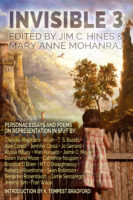 Carrie Sessarego is one of the contributors to Invisible 3, which includes 18 essays and poems about representation in science fiction and fantasy. You can order the collection at:
Carrie Sessarego is one of the contributors to Invisible 3, which includes 18 essays and poems about representation in science fiction and fantasy. You can order the collection at:
Amazon | B&N | Kobo | iBooks | Smashwords | Google Play
Three other essays from Invisible 3 are available to read online:
- Of Asian-Americans and Bellydancing Wookiees, by Dawn Xiana Moon
- Our Hyperdimensional Mesh of Identities, by Alliah
- Notes from the Meat Cage, by Fran Wilde
And I’d be remiss if I didn’t remind folks that the collection is eligible for the Hugo Award in the Best Related Work category…
#
Lost in Space: A Messy Voyage Through Fictional Universes
In Which We Prepare for Launch
In the past year I’ve struggled with managing increasingly serious symptoms of arthritis and fibromyalgia, as well as other symptoms of Noonan Syndrome. These issues affect my daily life and make me question my identity. Does having the kinds of problems I have mean I’m disabled? Lately I’ve settled on my own word to describe myself: ‘messy’. I do not intend it as pejorative term. Many wonderful things are messy – babies, Jackson Pollock paintings, glitter, and my house, for example. I chose the term because I tend not to fit neatly into a category, I look unusual, and my problems defy simple solutions.
With my new favorite word in mind, I decided to take a tour through a few of the fictional universes I love to see where my messiness might fit in. In science fiction, we explore the notion that technology will cure all or most conditions which are perceived as detrimental. This sets up a treatment of ‘messy’ conditions as one in which the presence of mess is a sign that a planet or society is poor and otherwise backward.
This is why I am most likely to be represented in franchises such as Star Wars and Firefly, which show a clear line between the planets that are part of the establishment and planets that remain outside the establishment. It also means my appearance in those franchises would be derogatory. My uncorrected droopy eye and my limp signal, “This planet is poor.” My existence signals that a society is failing to care for its own. However, it might also be a sign that a society is willing to tolerate difference – a positive trait that is undercut by keeping messy people in the background instead of allowing them to shine as main characters.
In Which We Visit the Star Wars Universe
The Star Wars Universe can be split into two types of settings: tidy and messy. I’d never be found in the more prosperous cities of the Empire, or the Empire’s ships and stations. The Empire’s look is polished and perfect, unlike the more rough, dirty, used look of the Rebel Alliance. Even Darth Vader, who is profoundly disabled, has an exterior façade of physical strength and health, thanks in part to Vader’s glossy suit. By presenting a perfect, clean, shiny world, The Empire positions itself as an institution of order versus chaos. In the Empire, everything is under control – in many senses of the term.
The iconography of the Empire conveys power but also conformity. It echoes Nazi propaganda, with high-necked uniforms for officers and faceless, elite soldiers called “stormtroopers.” Troops stand in formation to hear speeches set against the backdrop of red flags. It seems highly unlikely that anyone messy would be tolerated in the Empire’s most militaristic strongholds. Someone with my odd gait and appearance would be an embarrassment – a blot on an otherwise perfect presentation of physical power.
The less developed a planet is, the more likely it is to be friendly towards the Rebel Alliance. Like most frontier lands, the inhabitants of these planets dislike rules and like most frontier lands they seem to be much more hardscrabble than the Empire – these are places where perfectly polished steel is replaced by rusty spare parts. For example, in A New Hope, Tatooine is clearly under the Empire’s dominion, and yet people speak quite openly of joining the Rebellion.
These planets are impoverished, yet they are also havens of non-conformity. Look at the residents of the rougher neighborhoods of Tatooine or Jakku, and you could easily find me limping down the street. My very “messiness” would serve as a sign that this planet is Not Up To Par. It would be a sign that The Empire does not serve all planets equally as well as a sign that the Rebellion is not doing well. We know from Anakin Skywalker’s transformation into Darth Vader that incredible medical technology exists. It seems likely, however, that the Rebellion-friendly planets don’t have access to it.
On the plus side, while the outer planets may not have the ability to fix problems, they do seem to be willing to tolerate every possible level of appearance and behavior. It’s even possible that my odd appearance would not block me from becoming one of the central actors in a Star Wars franchise film. After all, Yoda is even shorter than I am, and unlike me, he’s green. However, The Star Wars main cast spends a lot of time running and fighting hand-to-hand. Unless I develop an affinity for The Force, there will be no trips in the Millennium Falcon for me. I’ve been trying to use The Force on things since I was six and nothing has happened yet, but maybe I’m a late bloomer! Till then, I would be relegated strictly to the alleys of some dusty town, evidence that no one has the resources to fix me but also that no one has an interest in eliminating me.
In Which We Survey The ’Verse (Firefly and Serenity)
Here’s another example of the link between disability and class. Someone like me could easily be located in the ports of the relatively impoverished Rim planets. The Rim Planets and their inhabitants are allowed to be ‘messy,’ but the prosperous cities (the Core worlds) are not. The Core worlds, dominated more closely by the Alliance, rely on a very similar aesthetic as the cities dominated by the Empire in Star Wars, for the same reasons. An optimistic soul might say that the medical technology on Core worlds is so advanced that physical impairments are easily cured. A more cynical soul might say that those who can’t be cured are ‘encouraged’ to seek life out of sight of others.
It’s theoretically possible that I could be part of the main Firefly cast if I had a special skill to offer that did not rely on physical strength. For instance, Wash, Simon and Kaylee are all physically fit, but their use to the crew is due to their skill sets (pilot, surgeon and mechanic, respectively), not their physical fitness (I realize many people with disabilities are extremely physically fit, but I am not). Additionally, there’s the fact that anyone can be a passenger if they have enough funds – presumably even short arthritic women.
Unfortunately, given my slow walking speed and non-existent running speed, it’s doubtful I would survive the events of the movie (Serenity). The other barrier to my being part of the Firefly crew is that the crew is, as Mal might put it, “So very pretty.” Indeed, an abundance of good looks is possibly the only common denominator of the ship’s passengers and crew. I have many lovely qualities, but a Hollywood standard of “pretty” is not one of them.
In Which We Transport Ourselves to Star Trek
Star Trek has been quite ambitious in trying to portray people with disabilities in a positive light. In the Original Series, Miranda Jones is blind (“Is There in Truth No Beauty”). In the Next Generation, Picard has an artificial heart, Geordi is blind, and several individual episodes deal with disabilities.
However, there is still no place for messy in Star Trek. Disabled characters have a single issue (blindness, for instance). This issue is dealt with in a way that does not impair the attractiveness of the actor (although Geordi’s visor does conceal actor LeVar Burton’s eyes) and it gives the characters an advantage – both Geordie and Miranda Jones are able to sense things that others cannot, although in very different ways and through different means. On other occasions, a disability can be cured or treated by a single, though risky, operation or drug, one which patients undergo rather than stay disabled (“Ethics” and “Too Short a Season”).
The one character who might be truly viewed as ‘messy’ is Commander Pike of The Original Series. Pike was injured in an accident and became scarred, paralyzed, and unable to speak (the idea that The Federation can’t come up with a better way to help him communicate is the most implausible part of the episode). In “The Menagerie,” he is returned to the remote planet Talos IV, where he can live with an illusion of being his younger, pre-accident self.
Over and over again, Star Trek says one thing but shows another. When Worf demands that Riker kill him after Worf is paralyzed, everyone tries to talk him out of it. Geordie is a vital member of the crew with or without his visor. No one supports Admiral Johnson in “Too Short a Season” in his attempts to de-age by popping alien space pills.
Star Trek SAYS people with disabilities have value. But Star Trek SHOWS a society in which only tidy forms of disability are allowed. There are no captains in wheelchairs. Characters who are not cured or fixed or blessed with extra useful technology disappear. While Star Trek SAYS that people with disabilities can still contribute to society, in practice characters choose to risk their lives lest they become disabled and therefore “useless.” The exception is Troi, who realizes that she can still be useful after she loses her empathic powers, but she gets them back, tidily, at the end of 45 minutes.
If I could be found anywhere in Star Trek, it would be on Deep Space Nine, that frontier outpost no one wants to be assigned to. Here. class distinction strikes again. The characters in this show are experienced with dealing with mess in terms of assisting travelers and the survivors of war. Deep Space Nine also has a wheelchair user named Melora who refuses to be ‘fixed’ and who insists, correctly, that she can be a useful, adventurous, active person despite her inability to walk in “normal” gravity (“Melora”).
Alas, Melora leaves the station after only one episode, and once again we are left with a cast that is either non-human or human/human-like and very pretty and athletic. If I were on Deep Space Nine, I would be a mess for the crew to deal with, a “Very Special Episode.” There’s still no allotment for messy among the crew.
A Quick Read in the Spaceport: The Vorkosigan Saga
FINALLY! Miles Vorkosigan, of the beloved book series by Lois McMaster Bujold is the essence of messy! He’s short (we are the same height!) and oddly proportioned! He has brittle bones, which means his physical abilities and pain levels change constantly as various parts of him break and heal. He has scars. He struggles with mood disorders. None of this stops him from living a life of adventure and daring, and he has a happy romance.
This book series has a huge and loyal fan base, many stories and sub-plots, an abundance of world-building and fascinating characters, and yet it has never been adapted to screen. Could it be that it’s simply too messy for Hollywood to contemplate? For the sake of brevity (I know, too late) I’ve confined our trip to stories that made it to the screen. This book series is a hint of how much diverse representation is possible if Hollywood were more daring.
Reflections from Home
After such an exhausting trip, I need a nap. But first, my conclusion: the world of television and film, especially large franchises and series, likes things to be tidy. The problem is not that there are no disabled people in science fiction. The problem is that disabled people are so often relegated to a Very Special Episode and/or a guest character role, and they are made so tidy that they do not resemble the messy reality that many of us experience.
Frankly, I’d be thrilled if my conditions could be cured. But that doesn’t mean that our fictional worlds should be without mess. Mess is part of life. People who have complicated physical and mental issues are part of life, and they are vibrant and capable. Why couldn’t I be an interplanetary historian for the Enterprise, or a Rebel Alliance pilot in Star Wars, or a traveling storyteller in Firefly? Why should I hide in some smoky corner of a Cantina when I could be at the Council table plotting the rebellion?
When storytellers banish people like me to the Cantinas and the alleys of backwater planets, they are telling us, “You are undesirable. You are a sign that things have gone wrong. You are not nice to look at and you can’t get shit done.” Yet I know any number of messy people who get shit done all the time. If they worked on the crew of The Firefly, they’d make the protein packs taste good and the jobs run smoothly and in their spare time they’d knit everyone blankets. That’s the kind of universe I really want to visit.
I’m not invisible in science fiction, just insulted by being a symbol of inadequacy. I have no wish to glorify my physical or mental problems. They cause me constant pain and if I could get rid of them I would do so in a heartbeat. But that doesn’t mean I can only exist as a symbol of a society’s failure to fix me. I can also be a symbol of determination and resilience and resolve and the kind of beauty that is only noticeable when one is paying close attention. Perhaps on my next tour, I’ll find someone like me standing for better things than failure.
#
Carrie Sessarego is the resident “geek reviewer” for Smart Bitches, Trashy Books, where she wrangles science fiction, fantasy romance, comics, movies, and non-fiction. Her first book, PRIDE, PREJUDICE, AND POPCORN: TV AND FILM ADAPTATIONS OF PRIDE AND PREJUDICE, WUTHERING HEIGHTS, AND JANE EYRE, was released in 2014. Her work has been published in SEARCH Magazine, Interfictions Online, After the Avengers, The WisCon Chronicles Vol. 9, Google Play Editorial, and Speculative Fiction 2013: The Year’s Best Online Reviews, Essays And Commentary. When not reading and writing, you can find Carrie speaking at conventions, volunteering for the Sacramento Public Library, and getting into trouble with her mad scientist husband, Potterhead daughter, mysterious cats, and neurotic dog.







 I first met her in the book series The Wicked Years by Gregory Maguire, where most aspects about her gender and sexuality were ambiguous or obscured between the lines, and later in fan fiction, where the depths of Elphaba’s intersectional identities (canon or not) could be explored to the fullest by writers that shared those same identities.
I first met her in the book series The Wicked Years by Gregory Maguire, where most aspects about her gender and sexuality were ambiguous or obscured between the lines, and later in fan fiction, where the depths of Elphaba’s intersectional identities (canon or not) could be explored to the fullest by writers that shared those same identities.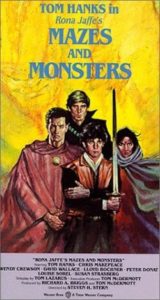
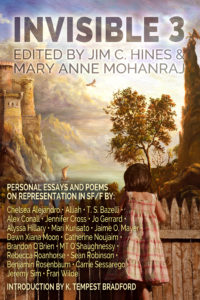
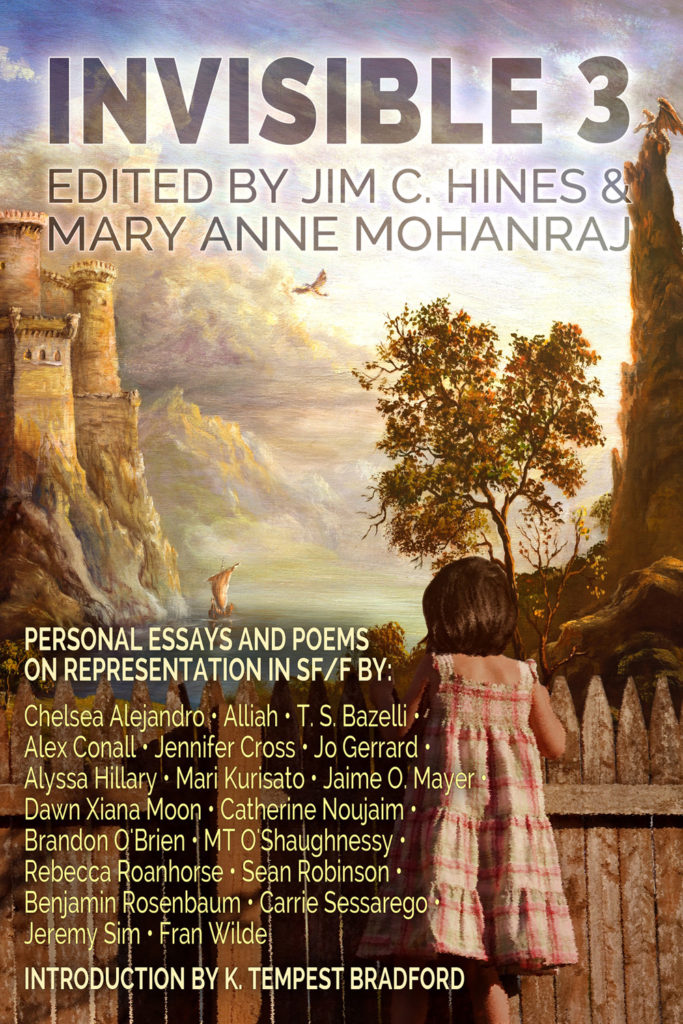
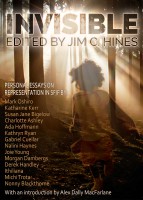 In 2014, twelve authors and fans shared their stories about the importance of representation in science fiction/fantasy in
In 2014, twelve authors and fans shared their stories about the importance of representation in science fiction/fantasy in 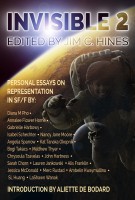 Once author and artist payments have been covered, all additional proceeds will go to the
Once author and artist payments have been covered, all additional proceeds will go to the